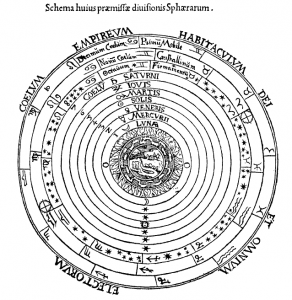How The Big Bang Never Happened
“According to the new model, the Universe is filled with a quantum fluid...”
Doesn’t this remind you a bit of the antiquated concept of “aether” or “quintessence” — Here’s a bit on the ancient and medieval science of aether so you can compare:
“According to ancient and medieval science, aether (Greek: ????? aith?r[1]), also spelled æther or ether, also called quintessence, is the material that fills the region of the universe above the terrestrial sphere.[citation needed] The concept of aether was used in several theories to explain several natural phenomena, such as the traveling of light and gravity. In the late 19th century, physicists postulated that aether permeated all throughout space, providing a medium through which light could travel in a vacuum…” (Wikipedia)
Now, read this article about the new theory of how the Big Bang may never have happened. So similar, yes? It’s funny how knowledge can swing around like a giant pendulum…
New theory suggests the Big Bang never occurred
Instead, the Universe has simply been going forever.
FIONA MACDONALD (sciencealert.com)
A new quantum equation suggests that the Universe has no beginning or end, and it could also account for dark matter and dark energy.
Researchers have created a new model that applies our latest understanding of quantum mechanics to Einstein’s theory of general relativity – and according to their calculations, the Universe may have been going forever.
It’s currently widely accepted that the Universe is around 13.8 billion years old, and before that everything in existence was squished into a tiny point – also known as the singularity – which was so infinitely dense that we can’t see anything before it. From there it famously exploded into a “Big Bang”.
This theory was derived from the mathematics of general relativity, but scientists have one big issue with it – it only explains what happened immediately after the Big Bang, not what happened during or immediately before it.
“The Big Bang singularity is the most serious problem of general relativity because the laws of physics appear to break down there,” co-creator of the new model, Ahmed Farag Ali from Benha University and the Zewail City of Science and Technology, both in Egypt, told Lisa Zyga from Phys.org.
Working with Sauya Das at the University of Lethbridge in Alberta, Canada, Ali has now managed to resolve the issue by creating a new model in which the Universe is infinite, and the Big Bang singularity never occurred.
This model was created using updated quantum equations and trajectories, and it also doesn’t predict a “big crunch”, when the Universe collapses in on itself a condenses to that dense point once more. Which, we guess, is pretty good news when you think of the alternative.
The physics behind the quantum corrections is pretty intense, but, basically, the researchers updated several equations and replaced the notion of geodesics, the curved paths that particles will move along when they’re only under the influence of gravity, with quantum trajectories. And unlike classical geodesics, which cross at points of singularity, these quantum trajectories never intersect.
Importantly, the model, which has been published in Physics Letters B and arXiv, also gives the Universe new constants and explains why it’s not shrinking as the current model predicts.
Zyga explains over at Phys.org:
“In cosmological terms, the scientists explain that the quantum corrections can be thought of as a cosmological constant term (without the need for dark energy) and a radiation term. These terms keep the Universe at a finite size, and therefore give it an infinite age. The terms also make predictions that agree closely with current observations of the cosmological constant and density of the Universe.”
According to the new model, the Universe is filled with a quantum fluid, which might be composed of gravitons…”
For the rest, click here.
Share

